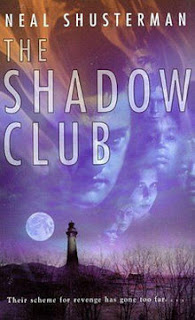I bought this book as a present for my sixteen-year-old son who loves war topics, but isn't so keen on reading lately, so he would have a good book to read for his English class. He got halfway in and quit reading, so I offered to read it so we could talk about it and motivate him to finish reading it. I got halfway in and almost quit.
The topic is very interesting, but it gets bogged down in the middle with lots of publishing information and political infighting that gets boring if you don't have enough background information to keep you interested. However, when it refocuses on the soldiers and their experiences, it is a good read.
The book is a true story of how books were used to fight Hitler's attack on books and ideas in World War II. The book starts with a chapter on the Nazi's book burning and "whole war" attack on differing thoughts, ideas, and philosophies.
Many people in Europe began hiding books in caves and castles hoping Hitler wouldn't find them, while others began shipping the books to other countries. H. G. Wells began gathering the titles of the banned and burned books and created the Library of Burned Books in Paris in 1934. When Germany invaded France, the Nazis put the library under lock and key and only let their high ranking officials in to see the books.
When American librarians heard of the book burnings and banned books and authors, they were outraged. They wanted to find a way to use books to counteract Hitler's attack on free thought. When America men were drafted to begin training for war, the librarians began book drives to send books with them. However, there were several problems that kept their original idea from succeeding. The training camps were in disrepair and sorely lacking in equipment and supplies. There was no place to house the books and it was hard to justify spending the time and money to build libraries when there were so many other things that needed to be built. Soldiers didn't even have weapons to train with and had to use cardboard props to practice shooting artillery at fake planes. Another problem was that Americans used the opportunity to clear out books they no longer wanted, so the librarians got books on knitting, religion, and children's books, which were not things the soldiers were interested in reading. When Americans were sent to the front, the military was adamant that the soldiers needed things to read to counteract the boredom, fatigue, and horrors they were experiencing each day. With the budget cuts and paper shortages, the librarians had to be creative in finding new ways to print books. They came up with two pocket sized versions that were easy to read in any type of lighting, were small enough for a pocket or knapsack, and were light enough to not weigh the soldiers down. They were so successful, the men couldn't get enough of the books. Men who hadn't picked up a book since being forced to read in school fell in love with reading. It gave them hope, courage, a new mindset, and an escape from the realities surrounding them. The plan was so successful that when the men returned from war and used the GI Bill to go to colleges and universities, they were the best students.
One of my favorite parts were learning how the American soldiers saved The Great Gatsby from obscurity because they loved reading it on the front. My other favorite part was reading about the difficult places that the men read - from hiding in foxholes and trenches while Japanese tanks continually drove over their heads to lying wounded at the foot of the cliffs on Omaha Beach reading while they waited for medics to arrive.
It is a great book and I learned a huge amount of information on a topic I knew nothing about. However, if you plan to give it to a boy to read because he likes war, you may want to warn him that some chapters are boring and he may need to skim them in order to be willing to read on to the chapters that go back to the soldiers. Your guy may be different, but this might help you if you have a kid like mine that won't finish books when he gets bored.










